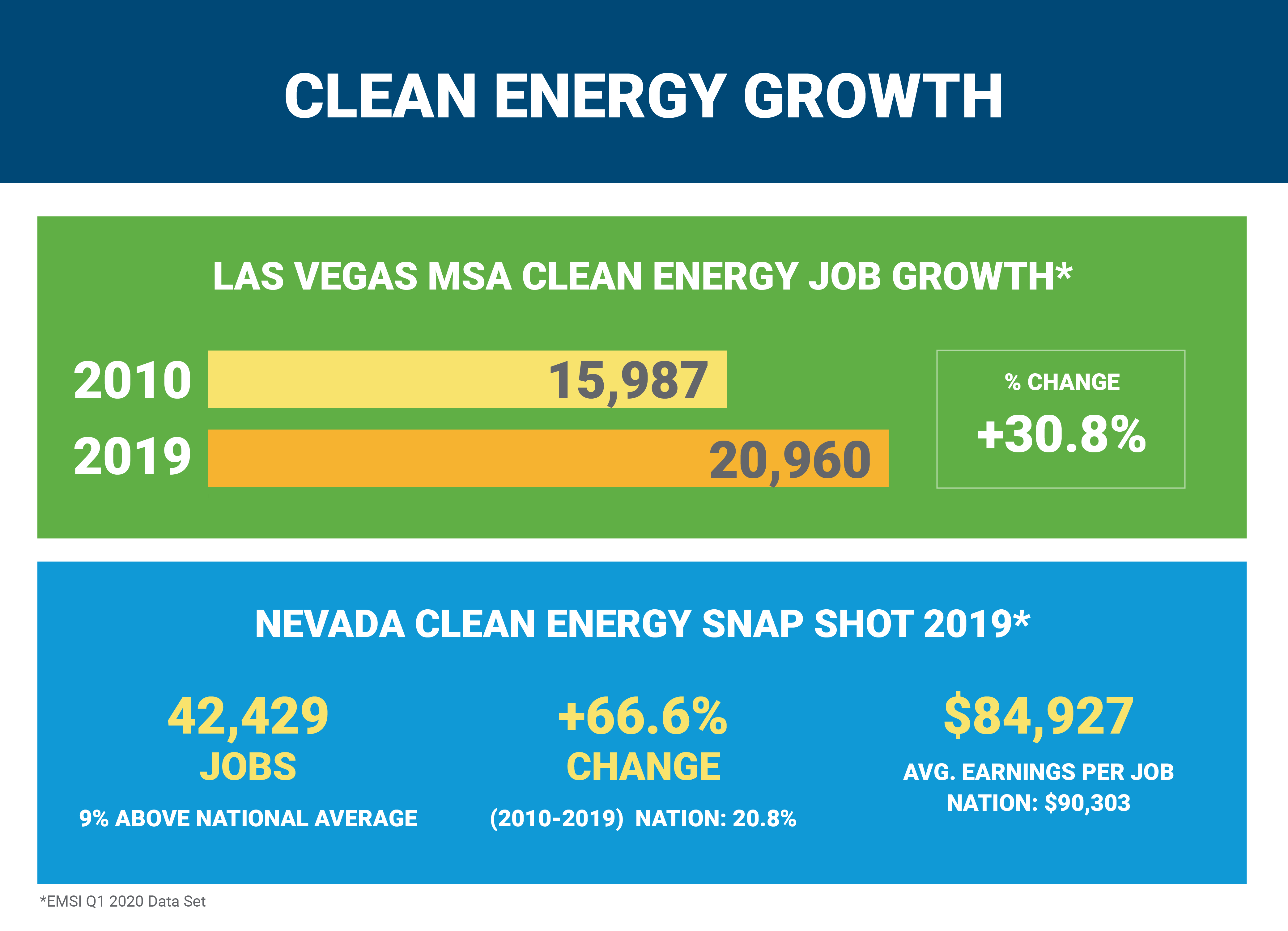The landscape surrounding the Las Vegas Valley is swathed in vivid hues and marked by majestic mountains and flat-topped mesas erupting from the desert floor. While it’s a dramatically beautiful sight, what’s also beautiful about this sun-drenched expanse is that it helps give the state of Nevada the greatest solar power potential in the nation.
Ironically, the Silver State, long known for its gold and silver deposits, is sitting on a veritable goldmine of renewable energy sources. And today, visionary leadership equipped with landmark legislation promises to unlock those riches and along with them a wealth of clean tech opportunities.
Walking the walk, seeing the results
The City of Las Vegas doesn’t just talk about sustainability; this town lives it, becoming the largest city in the nation to have its municipal operations completely powered by renewable energy sources, including municipal buildings, fire stations, community centers, and streetlights. The city’s transition required the large-scale installation of solar panels on city buildings and the purchase of hydroelectricity from the Hoover Dam; altogether, the effort has reduced the city’s energy consumption by 30% for a savings of approximately $5 million per year.
Other positive developments followed, including the City of Las Vegas receiving the LEED Cities Gold certification in 2020, plus job growth in the clean tech industry as area businesses followed the city’s lead. Three of the region’s largest casinos have transitioned to renewables; MGM’s Mandalay Bay has constructed the largest rooftop solar array in the U.S, while the global data center giant Switch also powers its Las Vegas area headquarters and data center with 100% renewable energy.
To keep pace with the increased demand for renewable energy sources, NV Energy has added photovoltaic solar projects generating over 1,600 megawatts throughout Southern Nevada, with more projects planned. Additional clean energy is expected to be generated—as well as additional clean tech jobs—to meet future demand as both Las Vegas and the state of Nevada implement exciting new incentives and opportunities to spur clean energy construction and development.
C-PACE: Making sustainability good business in Las Vegas
A federally sponsored program that integrates private financing, C-PACE allows Las Vegas to reward clean tech growth and smooth the path to project completion for developers and construction companies that incorporate sustainability.
- C-PACE for Developers:
- For qualified projects, developers can finance up to 20% of construction costs using affordable, fixed-rate, non-recourse financing with repayment extended up to 25 years.
- The result: Developers can construct buildings with greater value and lower operating costs, while at the same time lowering the average weighted cost of capital. And since funding is private, developers can choose the lender they prefer.
- C-PACE for Registered Energy Efficiency Contractors
- For qualified projects, owners of commercial and industrial properties can finance up to 100% of energy efficiency projects through low-cost long-term financing with repayment extended up to 25 years.
- The result: Prospects, particularly owners of Class B and C properties seeking to preserve capital, can still upgrade their buildings to more energy-efficient, valuable properties through loans that require no personal guarantee, with repayment transferrable to a new owner if the building is sold.
The best part? These C-PACE incentives are implemented in Southern Nevada’s low-tax, low-cost environment where regulatory burdens are fewer and business-friendly policies are the norm.
Senate Bill 448: Nevada takes the lead in sustainable development
Senate Bill 448, passed in the fall of 2021, creates a new framework for energy efficiency, opening the way to development through:
- High Voltage Transmission: An infrastructure overhaul that will allow interconnection to new renewable resources and to the energy resources of other states.
- Transportation Electrification: Provides for an Interstate Corridor Charging Depot Program; an Urban Charging Depot Program; a Public Agency Electric Vehicle Charging Program; a Transit, School Bus and Transportation Electrification Custom Program; and an Outdoor Recreation and Tourism Program.
- Tenant Solar: Excludes multi-family housing facilities from regulation so that building owners/landlords can augment energy services with rooftop solar.
- Carbon Reduction: Requires utilities to achieve a reduction in carbon dioxide emissions of at least 80% by 2030, as compared to their 2005 levels.
- Energy Storage: The Renewable Energy Tax Abatement (RETA) program allows partial tax abatements for facilities that generate electricity from renewable energy or generate process heat from solar renewable energy.
- Incentivizing business relocation to Nevada: Among other benefits, provides an initial energy discount to qualified new customers.
From massive standard-setting solar arrays to vast sun-filled surroundings to pace-setting incentives, the Las Vegas landscape for sustainable development has never looked brighter.

Las Vegas LEED accomplishments:
- Completion of six megawatts of solar collection installations
- All municipal buildings LEED-certified
- Replacement of 42,000 streetlights with LED lighting
- Creation of more than 500 miles of bike lanes
- Increased recycling rates at city facilities
- Reduced water usage




